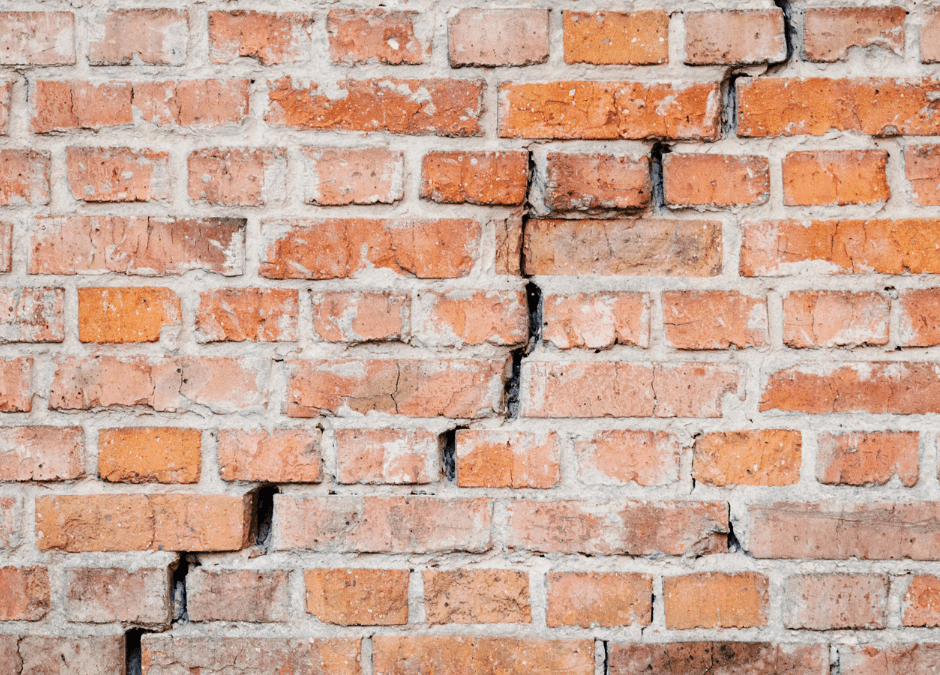Now it’s more important than ever as new maps from the British Geological Survey (BGS) reveal that climate change is likely to cause an increase in subsidence-related issues for British homes and properties over the next 50 years.
So, how do you spot the signs of subsidence and what should you do if your property has it? Let’s find out!
Subsidence or Settlement?
To put it simply, subsidence occurs when the buildings foundations are not supporting the building’s weight adequately; it can occur when the ground beneath your property gradually collapses or sinks, taking the building’s foundations with it. This causes the building to shift and can cause large subsidence cracks. It would normally require some remedial works such as underpinning to prevent further movement.
Settlement on the other hand occurs due to the natural compaction of the ground normally beneath a newly built house or extension and generally stabilises after some minor movement. This can also cause subsidence cracks, but is more minor in nature and not serious. Normally no remedial works are required.
The causes of subsidence
Leaking drains: Water from drains or gutters, especially after heavy rain fall can wash away the soil, leaving the ground saturated underneath your property and eventually causing it to subside.
Soil shrinkage: Dry, warm weather is one of the most common causes of subsidence. As the groundwater evaporates, porous clay soils are prone to shrink, crack and shift, leading to structural movement.
Tree roots: Trees may look harmless enough, but they can influence subsidence in a couple of ways. Firstly, they are able to extract valuable water from the soil, drying it out. And secondly, if trees are growing nearby, its roots can destabilise the ground and make your foundations uneven.
How to spot the interior signs of subsidence
Visible evidence of subsidence can be found on both the exterior and interior of a home. Here’s how to spot the warning signs of subsidence.
Cracks in the walls
These are the most obvious tell-tale signs of subsidence and they’re not hard to miss. Of course, you’ll get the occasional small hairline cracks in newer built properties or plastered walls, which is perfectly normal.
But if it’s wider than a 5mm, appears to be bigger at the top, and starts at the ground this can be a sign.
Sticking windows and doors
Jammed or sticking windows and doors are found in most properties but can on occasion be a sign of subsidence. If the frames appear to be warped, difficult to use, or surrounded by large gaps and cracks then this can also be a sign of subsidence.
Rippling wallpaper
Finally, does your wallpaper look rippled / crinkled at the wall and ceiling joints, but it isn’t caused by damp? Then it could be subsidence. One effective way to check is seeing if mildew, discolouration or condensation is present or not.
What should I do if my house shows signs of subsidence?
Don’t panic, most buildings do move around and normally minor cracks and movement are nothing to worry about however it is sensible to seek out a professional to help identify and diagnose the issue.
We can conduct a thorough inspection of your next property purchase via a Building Survey or HomeBuyer Survey.
Call Torus Chartered Surveyors in Altrincham now on 0161 929 7892 or fill out the form to request an instant quotation.

